I'm trying to use information_gain and mrmr feature filtering, but also a combination of information_gain and mrmr feature filtering (the union of the two). I've tried creating a reprex below.
library("mlr3verse")
task <- tsk('sonar')
filters = list("nop" = po("nop"),
"information_gain" = po("filter", flt("information_gain")),
"mrmr" = po("filter", flt("mrmr")),
"ig_mrmr" = po("branch", c("ig2", "mrmr2"), id = "ig_mrmr") %>>%
gunion(list("ig2" = po("filter", flt("information_gain")),
"mrmr2" = po("filter", flt("mrmr")))) %>>%
po("featureunion", id = "union_igmrmr"))
pipe =
po("branch", names(filters), id = "branch1") %>>%
gunion(unname(filters)) %>>%
po("unbranch", names(filters), id = "unbranch1") %>>%
po(lrn('classif.rpart'))
pipe$plot()
Looks good so far, and here you can see that I'm trying to combine the ig & mrmr selected features.
Next I set the parameters, which I think is correct:
ps <- ParamSet$new(list(
ParamDbl$new("classif.rpart.cp", lower = 0, upper = 0.05),
ParamInt$new("information_gain.filter.nfeat", lower = 20L, upper = 60L),
ParamFct$new("information_gain.type", levels = c("infogain", "symuncert")),
ParamInt$new("ig2.filter.nfeat", lower = 20L, upper = 60L),
ParamFct$new("ig2.type", levels = c("infogain", "symuncert")),
ParamInt$new("mrmr.filter.nfeat", lower = 20L, upper = 60L),
ParamInt$new("mrmr2.filter.nfeat", lower = 20L, upper = 60L),
ParamFct$new("branch1.selection", levels = names(filters)),
ParamFct$new("ig_mrmr.selection", levels = c("ig2", "mrmr2"))
))
The dependencies are where I'm struggling. I can set the "nested" parameters on EITHER the outer branch or the inner branch, but I'm not sure how to trigger them on BOTH. In the example below they are set on the outer branch.
ps$add_dep("information_gain.filter.nfeat", "branch1.selection", CondEqual$new("information_gain"))
ps$add_dep("information_gain.type", "branch1.selection", CondEqual$new("information_gain"))
ps$add_dep("mrmr.filter.nfeat", "branch1.selection", CondEqual$new("mrmr"))
ps$add_dep("ig2.filter.nfeat", "branch1.selection", CondEqual$new("ig_mrmr"))
ps$add_dep("ig2.type", "branch1.selection", CondEqual$new("ig_mrmr"))
ps$add_dep("mrmr2.filter.nfeat", "branch1.selection", CondEqual$new("ig_mrmr"))
ps
glrn <- GraphLearner$new(pipe)
glrn$predict_type <- "prob"
cv5 <- rsmp("cv", folds = 5)
task$col_roles$stratum <- task$target_names
instance <- TuningInstanceSingleCrit$new(
task = task,
learner = glrn,
resampling = cv5,
measure = msr("classif.auc"),
search_space = ps,
terminator = trm("evals", n_evals = 5)
)
tuner <- tnr("random_search")
tuner$optimize(instance)
Note that I don't hit an error until I try to optimize the tuner.
Error message:
Error in self$assert(xs) :
Assertion on 'xs' failed: Parameter 'ig2.filter.nfeat' not available. Did you mean 'branch1.selection' / 'information_gain.filter.nfeat' / 'information_gain.filter.frac'?.
